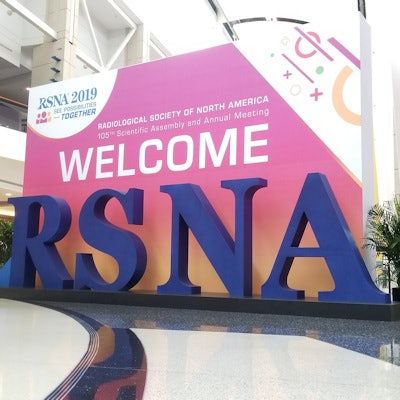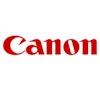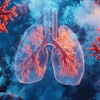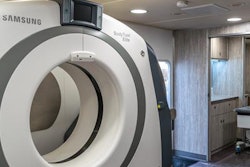
CHICAGO - Years of outreach and awareness campaigns appear to be paying off for CT lung cancer screening in a big way: The participation rate among eligible individuals in the U.S. has increased by as much as sevenfold in recent years, according to a presentation on Wednesday at RSNA 2019.
The researchers, led by Dr. Anand Narayan, PhD, of Massachusetts General Hospital, examined the results of a 2017 survey covering roughly 40,000 individuals throughout the continental U.S. and found that 14.1% of eligible individuals had undergone CT lung screening.
Collectively, the results represent a major uptick in CT lung screening participation rates, though there certainly remains plenty of room for growth, Narayan told session attendees.
"Outreach campaigns should look towards people who have increased eligibility -- including current smokers, males, and people with lower levels of education -- [in order to increase participation] and then also look to people who have lower levels of utilization," he said.
Turn of the tide
Low participation in CT lung screening has thwarted the early detection of lung cancer for years, despite having been approved for Medicare payment by the U.S. Centers for Medicare and Medicaid Services half a decade ago. Screening uptake has not only stayed considerably lower for lung cancer than for breast and colorectal cancers but also decreased almost twofold as recently as 2016.
A study analyzing the U.S. National Health Interview Survey estimated that the overall participation rate for CT lung screening was 3.9% in 2015. And a separate team of investigators reported that the participation rate had fallen to 1.9% in 2016, based on data from the American College of Radiology (ACR) Lung Cancer Screening Registry.
In the current study, Narayan and colleagues set out to establish a more recent estimate of the participation rate. To that end, they examined the responses from the U.S. Centers for Disease Control and Prevention's 2017 Behavioral Risk Factor Surveillance System telephone survey, which collected information on the health-related risk behaviors, disease prevalence, and use of preventive services in 10 different states. In all, they identified 4,545 survey participants who met the screening eligibility criteria recommended by the U.S. Preventive Services Task Force.
Among all participants who met the eligibility requirements, 14.1% reported having undergone a screening exam by 2017, indicating about a sevenfold increase in uptake compared with 2016. A study by Zahnd et al published in the American Journal of Preventive Medicine earlier this year confirmed these data.
Targeted outreach
What's more, Narayan and colleagues discovered that several patient factors had a statistically significant association with an increased likelihood of meeting eligibility requirements for CT lung screening: being of younger age (between 55 years to 64 years; p < 0.05), having a lower level of education (p < 0.03), and being male (p < 0.001). They also found that nearly 35% of current smokers were eligible for screening, compared with about 16% of former smokers.
However, the only sociodemographic factor that turned out to be associated with higher odds of receiving CT lung screening was having health insurance (p = 0.006).
These findings point to the possible advantage of targeting CT lung screening outreach to specific groups of individuals, Narayan noted.
"To improve overall lung cancer screening utilization, radiology practices should employ targeted outreach campaigns towards subpopulations with increased eligibility for lung cancer screening -- current smokers, males, lower levels of education -- and decreased lung cancer screening utilization, such as patients without health insurance," he said.




















